Córdoba-Huelva
Spanje / Spain (Winter 2010/2011-6)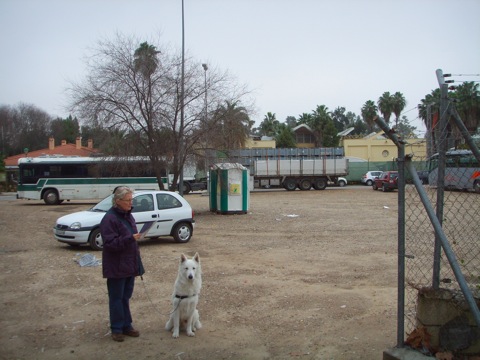
Op dit braakliggende terreintje tussen het universiteitsziekenhuis, dierentuin en hortus botanicus hebben we heerlijk rustig geslapen. Vandaar een kwartiertje lopen naar het oude centrum.
About 15 minutes walking distance from the old centre we found this quiet spot for the night. Neighbours are only the university hospital and the botanical and zoological gardens.
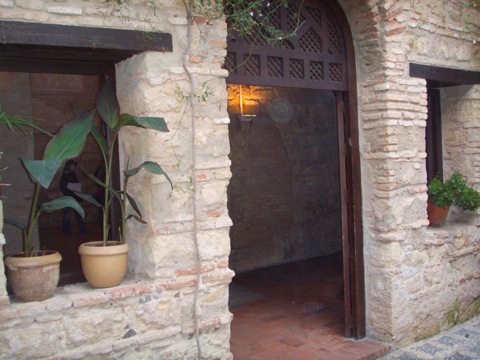
Ingang van de sjoel (1315). Dit is één van de drie sjoels die er in Spanje zijn overgebleven na 1492.
One of the three synagogues that are left in Spain after 1492 is this one in Córdoba.
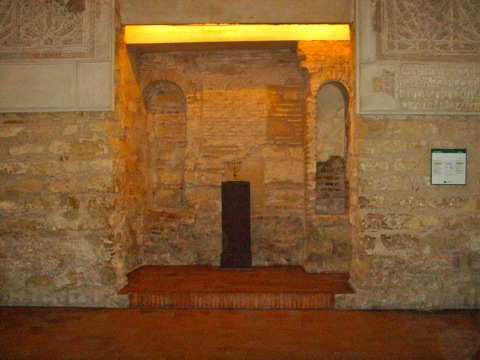
De nis waar ooit een Aron heeft gestaan.
The place in the eastern wall where once the Torah scrolls have been.
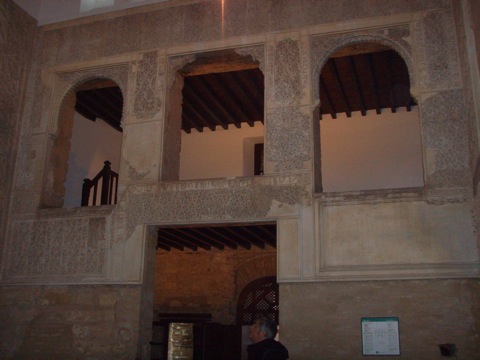
Restant van de vrouwengalerij.
What is left of the women's gallery.
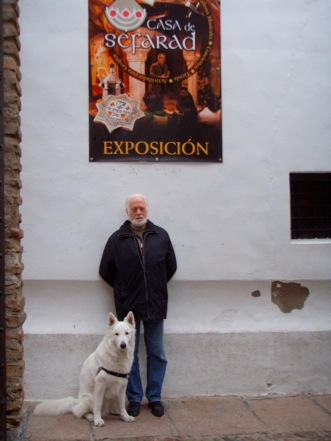
Vrijwel overal kunnen we alleen maar om beurten naar binnen, overal bordjes perros no. Ons witje wacht dan geduldig (?) tot vrouwtje of baasje weer buiten komt.
Because dogs are not allowed inside, we have to visit many places one at a turn. Our little white one has to wait outside.
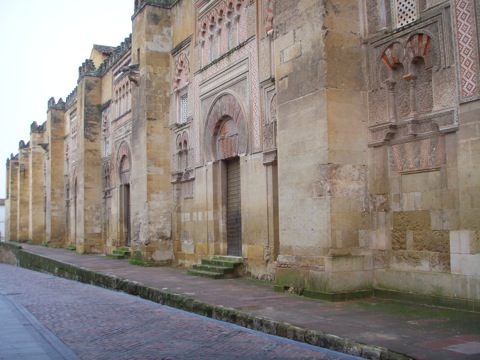
De beroemde Mezquita (Moskee), gebouwd tussen de 8e en 12e eeuw. In 1523 is een deel door de katholieken vernietigd om er een kathedraal van te maken.
Córdoba's famous Mosque (Mezquita). In the 16th century the archbishop of Córdoba had part of the unique structure destroyed to be able to turn the building into a cathedral.
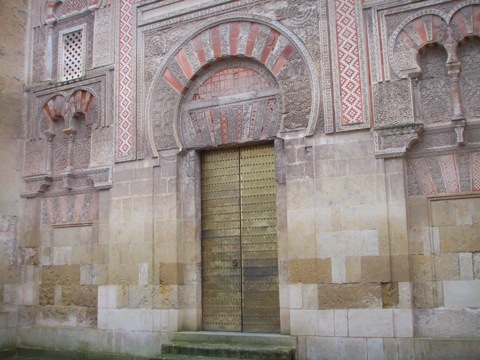
Veel deuren zijn van koper.
One of the many brass outside doors.
Vlakbij Córdoba ligt Madina al-Zahra, een van de hoogtepunten van de architectuur van het moorse al-Andalus.
Only 4.5 mi west of Córdoba lies Medina Azahara. Here one can find some of the highlights of muslim architecture, going back to the 10th century.
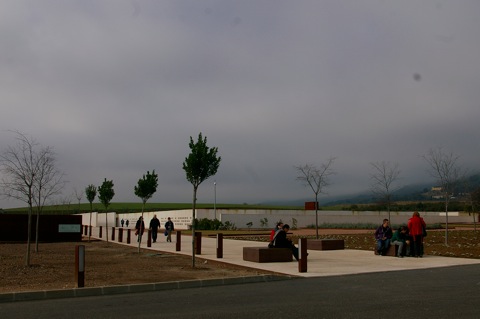
Het museum is alweer een staaltje van prachtige moderne Spaanse architectuur.
The museum has won the 2010 Aga Khan award for architecture.
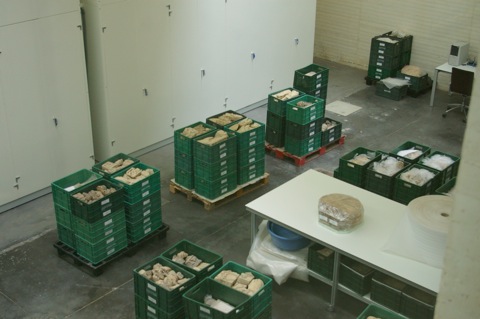
Het museummagazijn. De opgravingen zijn in volle gang. Er is pas 11% gereed, waarvan de helft voor het publiek toegankelijk is.
The vaults. Only 11% of the excavations is finished. And only 5% is made accessible to the public.
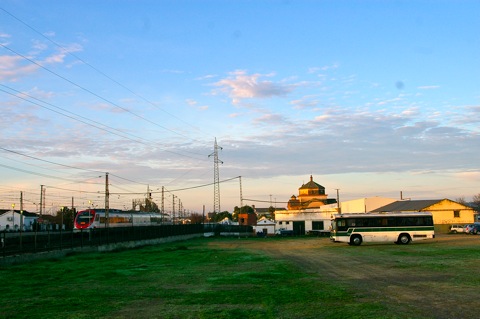
De volgende morgen vroeg: estacionamiento para camiones bij het station van Lora del Rio.
Halfway between Córdoba and Sevilla is a huge parking for trucks. The trains start running in the early morning, apart from that it has been dead quiet.
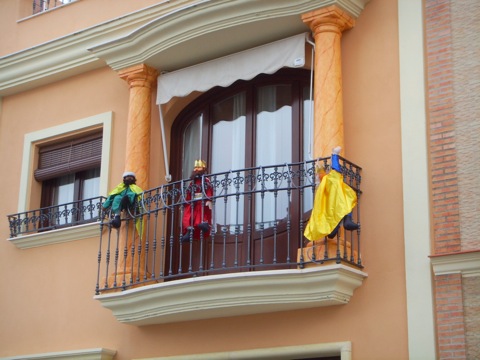
Morgen is het Driekoningen, wat kennelijk in deze regio stevig gevierd wordt.
Tomorrow is the date of Epiphany. Apparently quite a festival in this region.
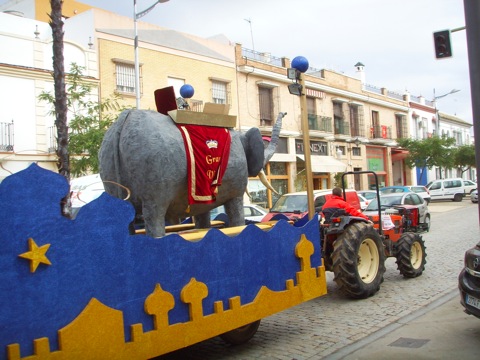
Alle praalwagens worden op het parkeerterrein naast het station in slagorde opgesteld voor de optocht van vanavond.
The preparations for the Epiphany procession are taking place. All floats are parked on the railway station parking for tonight's procession.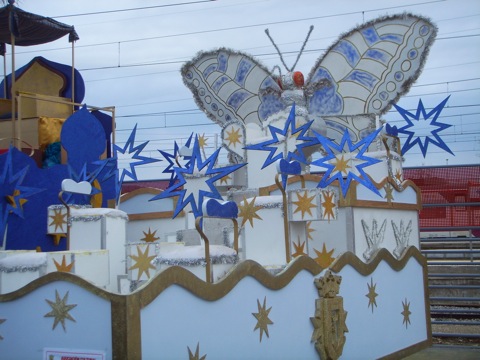
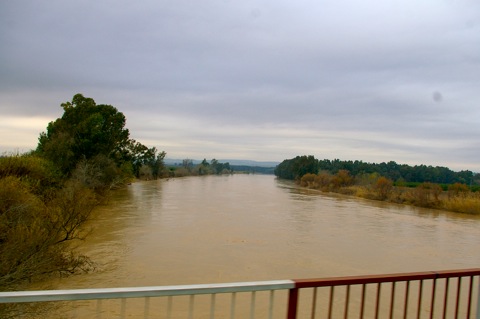
Vlak naast de bedding van de Guadalquivir...
Close to where we cross the muddy Guadalquivir...
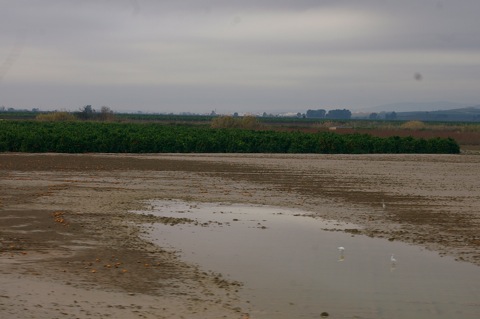
... zien we nog de resten van de overstromingen van enkele weken geleden.
... one still sees the left-overs of the recent floods.
We stoppen in de namiddag in San Juan del Puerto (provincie Huelva). Hier vallen we met onze neus in de boter: alweer een Driekoningen-optocht.
When we stop in San Juan del Puerto (Huelva) for the night, we are lucky: the next Epiphany procession!
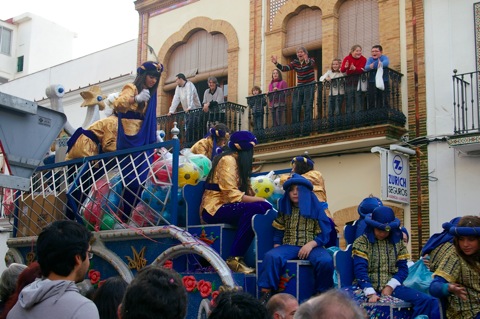
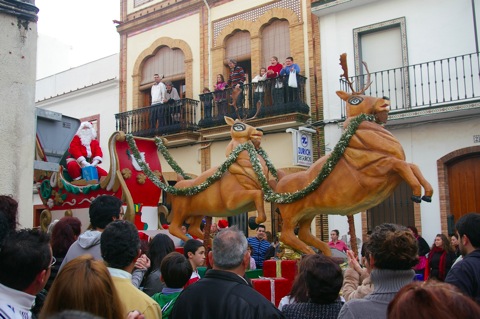
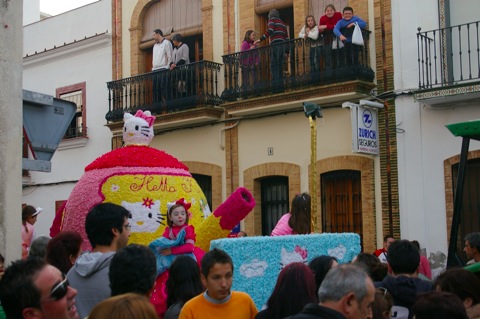
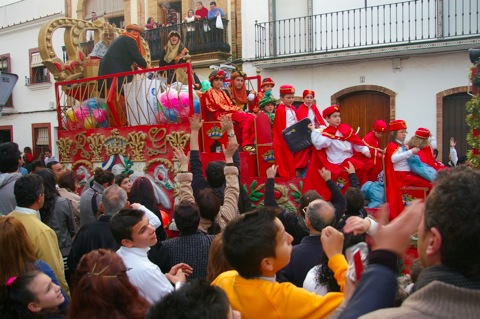
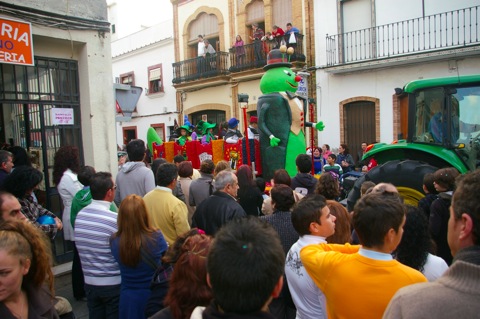
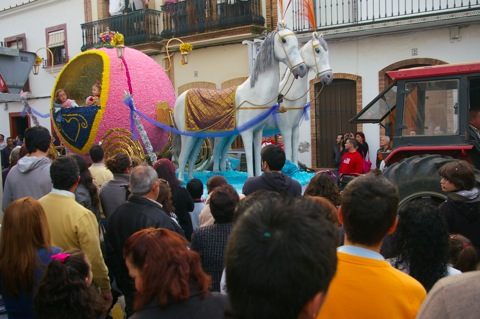
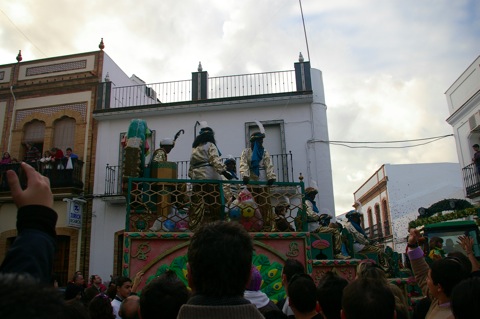
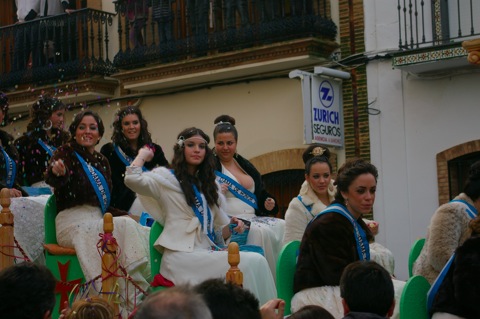
Zomaar wat plaatjes. De diepere betekenis ontgaat ons.
A very colourful spectacle. Just some pictures to give an impression.
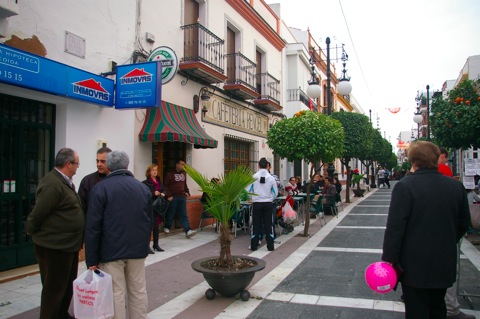
En natuurlijk moet er bij een glaasje worden nagepraat (ook door ons).
Afterward the local bar is doing good business.